56 episodes


Mycoplasma hyopneumoniae causes lung infections characterised by a low mortality, but high morbidity. This results in a higher FCR, lower daily growth, higher risk for secondary infections and increased treatment costs. Although M. hyo has been the topic of much research, its pathogenesis is still not completely clear, immune responses after infection and vaccination need to be further investigated. In this podcast host Vincent ter Beek of Pig Progress discusses the PhD study of Dr Evelien Biebaut, attached to Ghent University in Belgium, who spared no effort to learn more about how the bacteria behaves and how it can be controlled. Dr. Biebaut will tell you all about it.


Monitoring PRRS virus can happen perfectly well using tongue fluids, a topic that won a recent European PRRS Research Award. Pig Progress Editors Vincent ter Beek and Iris Hofman will discuss this technique with Dr. Andrea Ladinig, professor at the University of Veterinary Medicine in Vienna, Austria.


This episode with Prof Dr Christian Visscher of the University of Veterinary Medicine in Hanover, Germany, focuses on Lawsonia intracellularis (causing ileitis). He speaks about its effect on the microbiome, and how this affects pig production and for what extend oral vaccination can have effect on these.


Consulting economist Lance Mulberry is based in Missouri, USA. He shares his opinion about the pig industry’s tendency to focus on average to evaluate on-farm economic performance. He will address problems related to that tendency: it ignores variation and suggests that the underlying distribution is a normal. That way using averages will result in hidden costs, having many implications for the industry. His plea is to apply a more precision based approach


This episode takes a trip down the road of pig economics with a very well-known name in the industry, being Robert Hoste, attached to Wageningen Economic Research, part of Wageningen University & Research, based in the Netherlands. In the podcast there will be attention for pig market developments in the largest pig states in the world and there will be a look into the future as well.


Prof Joaquim Segalés is working as full professor at the Autonomous University of Barcelona, Spain and is researcher at the Centre for Animal Health Research (IRTA-CReSA). He has been performing research on swine diseases since 1993. In this podcast, he discusses methods how to best vaccinate against Porcine Circovirus Disease, for sows, piglets, boars and gilts alike.


Prof Hans Nauwynck is attached to the Faculty of Veterinary Medicine at Ghent University in Belgium. Viral diseases are at the core of his attention – and they will take centre stage in this episode of “Meet the Expert”. He will discuss reproductive failure in pigs, with particular attention for the viral component of that problem: PCV2, PRRS virus and parvovirus will be discussed.
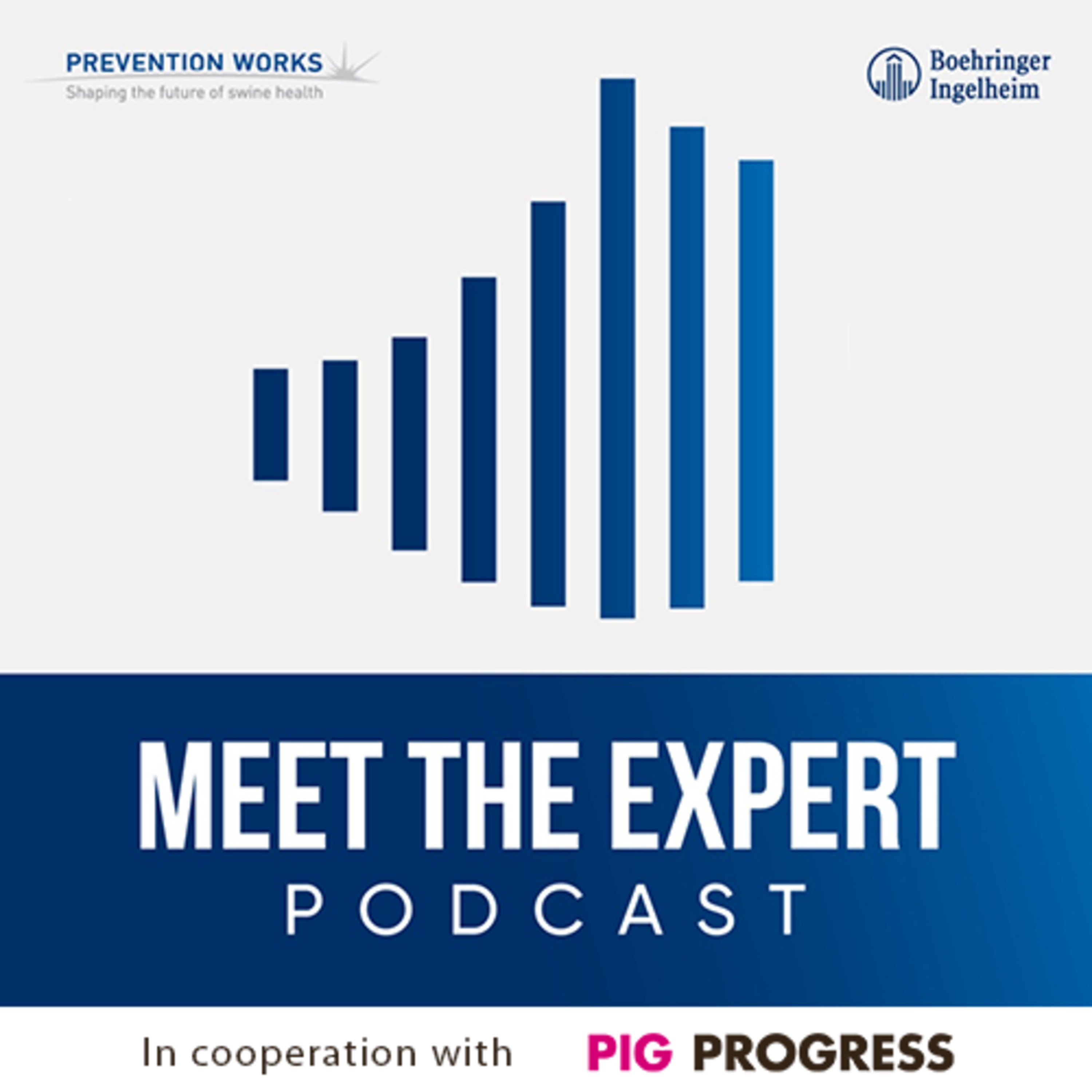

In this episode we welcome Dr Marina Sibila from the animal research institute CReSA-IRTA in Catalunya, Spain. Her research line focuses mainly on the epidemiology, diagnosis, animal model development and prevention/treatment strategies of porcine respiratory pathogens, mainly porcine circoviruses (PCV-2 and PCV-3) and porcine mycoplasmas. With Dr Sibila we shall discuss the diagnostics of Porcine Circovirus – type 2.
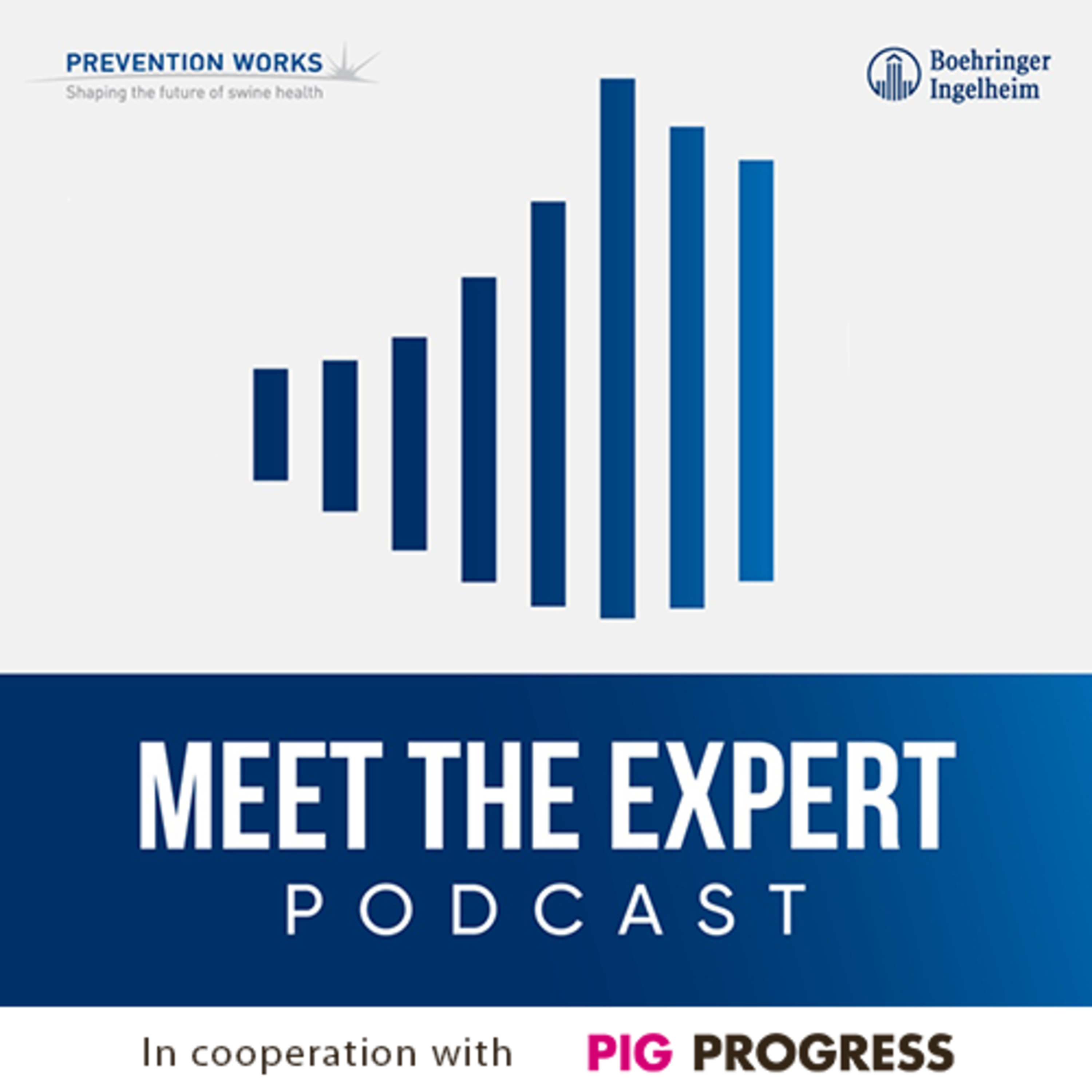

In this episode of "Meet the Expert" we shall be focusing on the classifaction of Porcine Reproductive and Respiratory Syndrome (PRRS) virus and deal with the question how to break the chain of infection. Just like in the previous episode, we will be speaking with Daniel Linhares, associate professor and director of graduate education at Iowa State University, USA.


This episode is the first of two podcasts with associate professor Daniel Linhares of Iowa State University in the USA. He is a well-known global expert on Porcine Reproductive and Respiratory Syndrome virus. This first episode revolves around monitoring of the virus in sow farms.
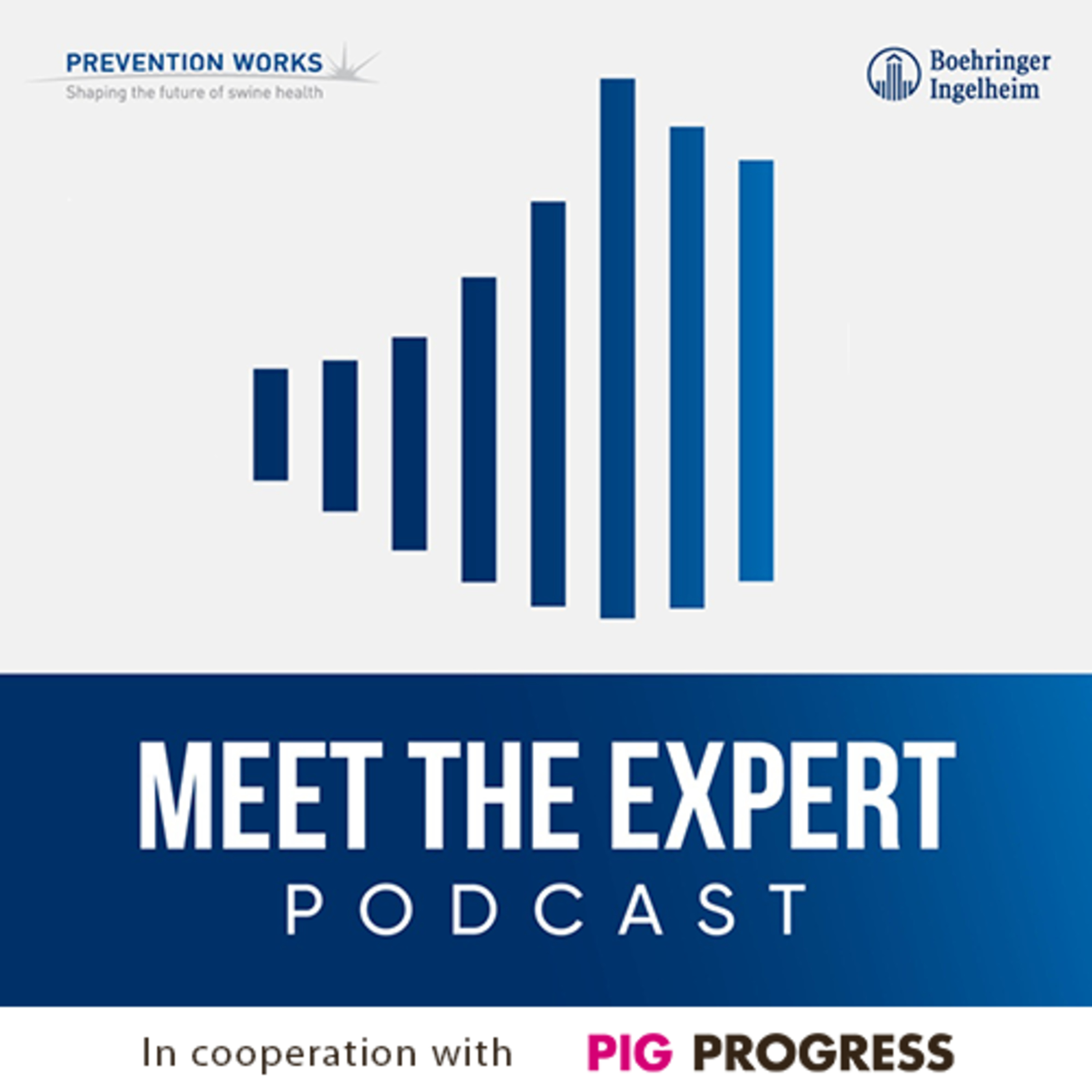

This episode zooms in on African Swine Fever virus in Vietnam. As the virus has been around there for a few years, various strategies have been developed how to get the disease under control. Guest Dr. Christa Goodell of Boehringer Ingelheim will explain about the so-called “tooth extraction method.” She researched this approach and discusses its pros and cons.
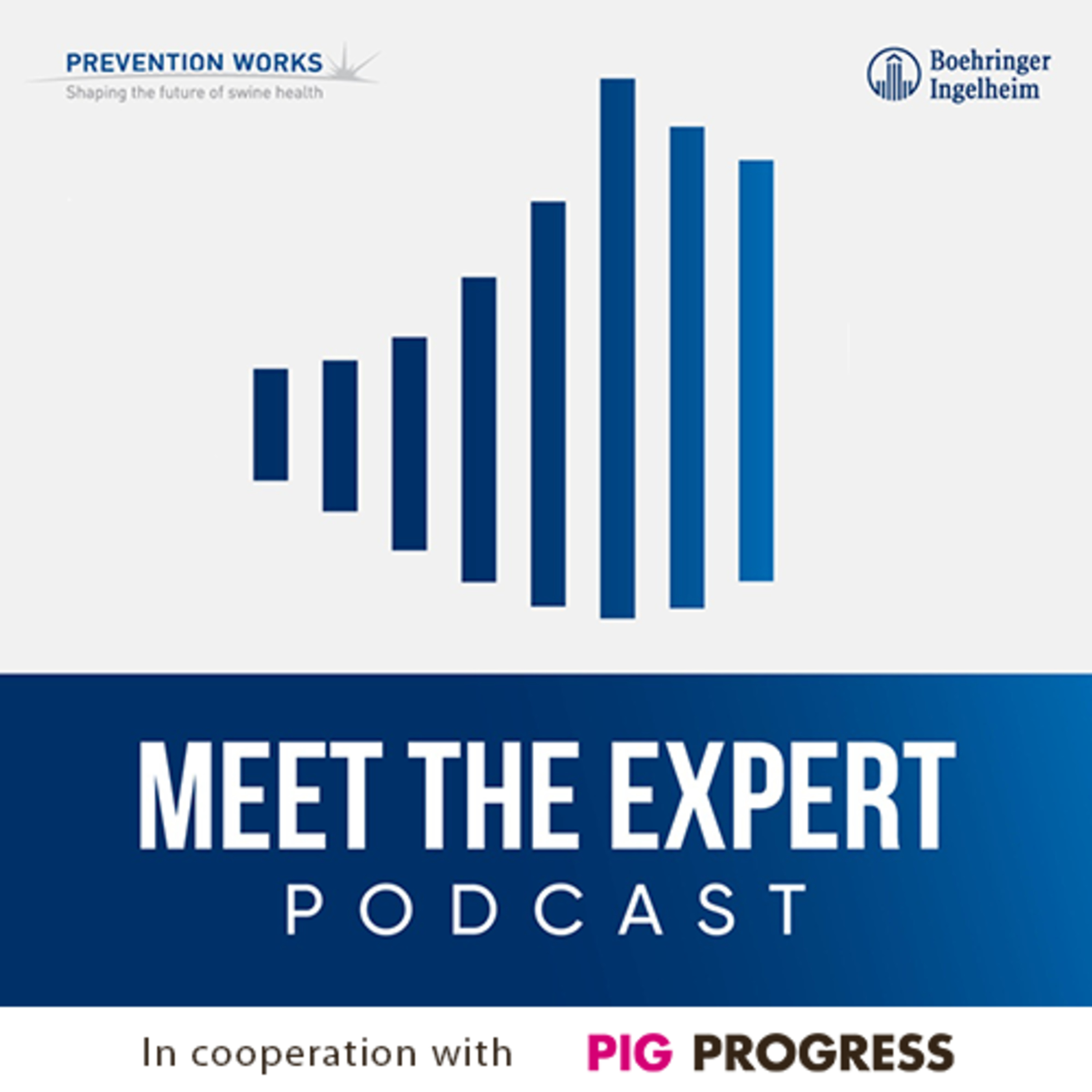

The word “sustainability” doesn’t need any introduction – trying to do more with less is on everybody’s mind. Making that happening, however, is easier said than done. During his many years at R&D with animal nutrition company Nutreco as well as in his role as professor at Wageningen University & Research in the Netherlands, Leo den Hartog never stopped asking how the industry could achieve a better feed efficiency. He is optimistic there are still many things the industry can do to only do a better job in the future.


In this episode we are going to further explore the topic of Precision Livestock Farming, as we are about to look into a very practical application with regard to pig health: early warning systems, like the Soundtalks cough monitor. Featuring in this episode is Dr Amanda Sponheim, part of the US Boehringer Ingelheim swine team as a key account veterinarian and also a PhD candidate at the University of Minnesota, where her research is primarily about identifying diagnostic approaches that may improve the detection of Mycoplasma hyopneumoniae in swine.


In this episode we are going to talk about Mycoplasma hyopneumoniae – causative agent for enzootic pneumonia in pigs. Very recently, new insights were acquired about costs related to eliminating the bacteria, after disease broke on a naïve breed-to-wean site. Guest in this podcast is Dr. Tom Gillespie, DVM, previously the owner and founder of Rensselaer Swine Services, and currently an international consultant for Performance Health LLC.


Producing pigs more sustainably can be achieved in many ways. Precision Livestock Farming (PLF) is one of them - after all, with technology it is often possible to determine at very detailed level what certain pigs need in terms of feed, temperature, ventilation or medication. By applying a targeted treatment, better results can be achieved with minimum input. The guest in this 3rd episode of Meet the Expert is Prof Dr Daniël Berckmans, of Leuven KU in Belgium, who is well-known for his attempts to make PLF more applicable in livestock production.
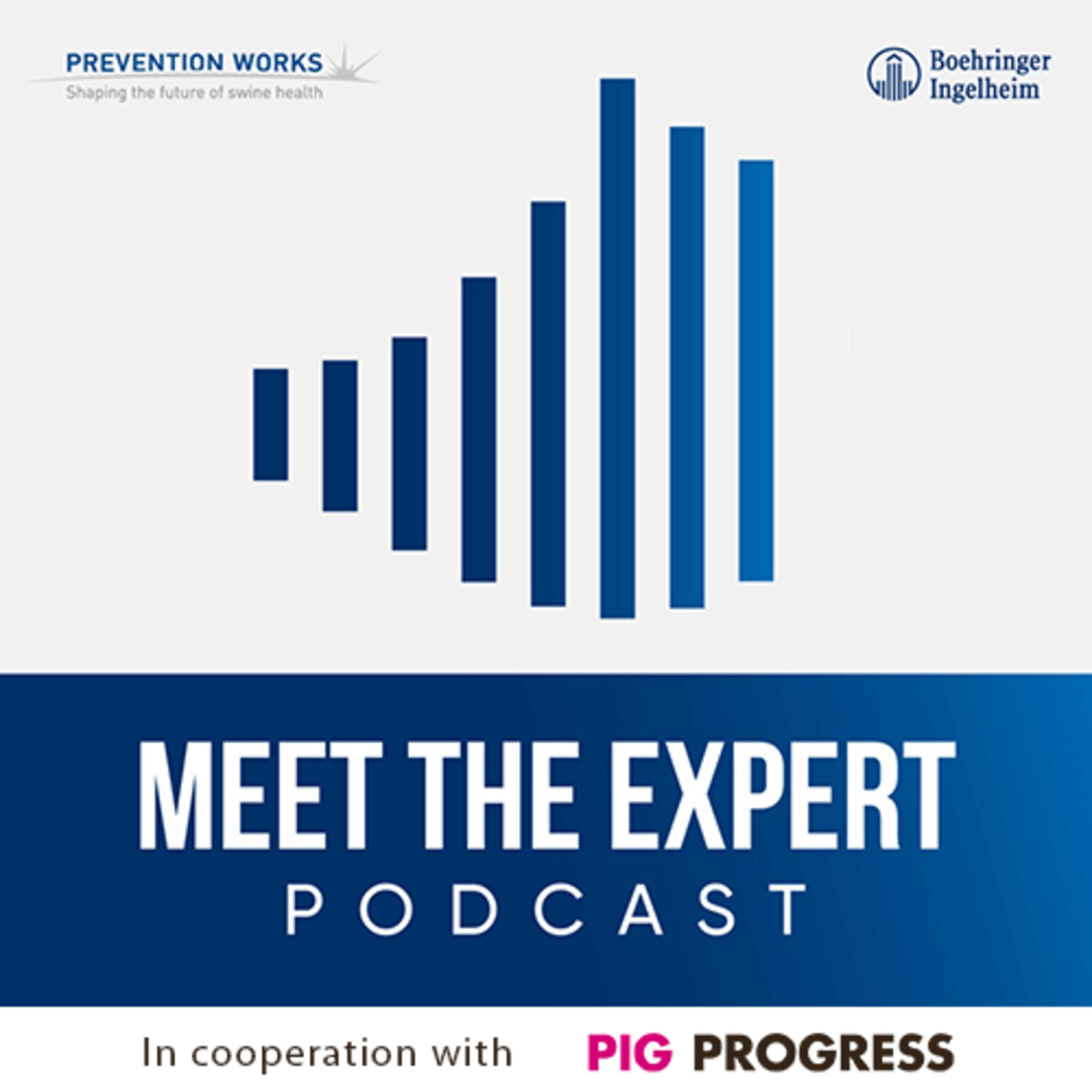

Veterinarians rely on others for our success. Identifying disease, treating disease, implementing biosecurity, conducting vaccinations, and most importantly to choose a course of action are all out of control regardless of farm size or ownership structure. This podcast discusses nearly 30 years of “lessons learned” in addressing health and production challenges in systems across the globe and how life can be easier using principles from the science of leadership.


When carrying out surveillance to detect PRRS virus presence in a herd, there are various ways to do so. In recent years, a new and effective method was developed by Spanish veterinarian Jordi Baliellas, attached to the Grup de Sanejament Porci (or Pig Hygiene Group) in Lleida, Spain. He opted for taking tongue tip samples – and that works very satisfactorily. In this first episode of the third Meet the Expert podcast series, Boehringer Ingelheim Animal Health and get to know all there is to know about tongue tip sampling for PRRS virus.


“DURING WINTER TIME, THE AFRICAN SWINE FEVER VIRUS MAY PERSIST UP TO FIVE MONTHS IN THE BONE MARROW OF A WILD BOAR'S CARCASS” A significant reduction in Europe’s wild boar populations and good biosecurity on all swine farms are necessary steps to combat African swine fever, Professor Zygmunt Pejsak emphasises in this Meet The Expert podcast. Professor Pejsak was head of the swine diseases department at the National Veterinary Institute in Poland when ASF first entered the country across its Eastern border. He discusses strategic options against the disease and makes the case for having effective surveillance in any affected or potentially affected country to control the possible introduction of a novel virus genotype.


“THE DIRECTION OF WILD BOAR MOVEMENT IN GENERAL IS TO THE WESTERN TERRITORIES...IT MEANS FROM RUSSIA TO BELARUS, FROM BELARUS TO POLAND, FROM POLAND TO GERMANY AND PROBABLY WILL BE FROM GERMANY TO FRANCE” As the Head of the Department of Swine Diseases at the National Veterinary Research Institute until his retirement, Professor Zigmunt Pejsak in Poland played a central role in the country's battle against African swine fever. In conversation with journalist Peter Best, he discusses how the ASF virus has travelled from East to West in European wild boar populations and the possibilities for its further spread.


“WE PLAN A QUARANTINE TIME OF A MINIMUM EIGHT WEEKS AND IF WE USE MLV PRRS VIRUS VACCINES, WE PREFER AROUND 12 WEEKS” Gilt introduction procedures are discussed by Danish swine veterinarian Dr. Kristian Havn in the context of a herd averaging 1,000 sows with an annual replacement rate of 45-50%, meaning a need to bring in 500 replacement gilts per year. A target of introduction to the sow herd at 34 weeks old dictates that gilts must be no older than 22 weeks on arrival, to accommodate a 12-weeks quarantine period. How to expose them to herd pathogens is still an open question, he says, because we will want them to produce an adequate level of antibodies in their colostrum when they eventually enter the farrowing room.


“GILTS CAN BE THE BEST REPRODUCTIVE PERFORMERS ON THE FARM IN TERMS OF CONCEPTION RATES AND FARROWING RATES --- IF THEY ARE NOT THE BEST, THERE’S AN OPPORTUNITY THERE FOR US TO GO WORK ON” For larger sow systems, a group-based gilt preparation process from weaning at 6 kilograms to breeding at 135 kg is detailed in this conversation in the United States with Dr. Clayton Johnson, veterinarian partner and Director of Health at Carthage Veterinary Services. Health acclimation should begin as early as possible, he tells us. Ideally therefore, bring prospective herd replacement gilts into an isolation barn when they are weaned. Groups would consist of four weeks’ worth of gilts, with the animals tagged to identify their birth week. Isolation is followed by time in a developer barn, until gilts weighing at least 120 kg when showing first oestrus are judged ready to move to the gestation area.


“IT’S IMPORTANT THAT PATHOGEN EXPOSURE OCCURS EARLY ENOUGH IN THE GILT’S LIFE SO SHE RECOVERS FROM THE INFECTION, STOPS SHEDDING THE PATHOGEN AND IS IMMUNOCOMPETENT AT THE TIME OF FARROWING” Divide the young gilt’s time before breeding into the separate categories of development and acclimation, says Dr. Clayton Johnson of Carthage Veterinary Services in the U.S.A. Development aims to prepare her physiology for a future in reproduction, acclimation tries to arm her immune system to cope with the pathogens in the sow herd. Target at least 680 grams of gain per day in the gilt developer phase. How acclimation is handled needs to be specific to each pathogen and each herd.


“IT IS A TOTALLY NEW CHALLENGE FOR THE FEED INDUSTRY --- A NUMBER OF FEED COMPONENTS CAN BE QUITE A GOOD ENVIRONMENT FOR THE VIRUS, WHICH CAN STAY INFECTIOUS FOR A LONGER TIME” In our final conversation about ASF with Dr. Tomasz Trela, technical manager for swine at Boehringer Ingelheim's regional centre covering Central and Eastern Europe, he emphasises the evidence connecting ASF infection to feed sources. These could be green crops harvested from contaminated fields, but also the virus has been detected in feed-mills in some countries and delivery vehicles may need to be diverted around hot-spots where infected wild boar are found.


“ASF VIRUS IS VERY RESISTANT TO PHYSICAL AND CHEMICAL FACTORS, THIS MEANS IT CAN STAY INFECTIVE FOR WEEKS OR EVEN MONTHS” The resistance of the virus and the difficulties of decontamination are just two of the issues facing swine farms that are located in an area where the infection is known to be present, says Dr. Tomasz Trela, Boehringer Ingelheim's technical manager for swine in Central and Eastern Europe. Quite new for swine veterinarians is the situation where wild boar represent a huge reservoir of pathogens surrounding the farms. All potential carriers of the virus onto a farm must be considered.


“WE HAVE RE-INTRODUCTIONS OF DISEASES IN SOME OF OUR FARMS EVERY YEAR, SO SOMETHING MUST BE ABLE TO IMPROVE BIOSECURITY...OUR PLAN IS TO EVALUATE ALL 1,220 FARMS THAT WE CONSULT” Dr. Kristian Havn is a swine veterinary practitioner with the Porcus practice in Denmark who has pioneered an innovative programme to improve biosecurity on the swine farms that he advises. In English, the programme’s name translates at Pathogen Stop. Its basis is an online survey form completed by the veterinarian in consultation with the farmer. The original idea was to make a system for evaluating biosecurity at farm level regarding PRRS virus, Dr. Havn explains in this podcast. But it has been extended to cover all pathogens, including APP, swine influenza, mycoplasma and even African swine fever.


“BIOSECURITY IS THE ONLY TOOL WE HAVE NOW TO PROTECT OUR PIGS AGAINST ASF” Precautions for protecting the farm against the entry of the African swine fever virus are explained by Dr. Tomasz Trela, the Boehringer Ingelheim technical manager for swine in Central and Eastern Europe. Based on the experiences of swine farms in Europe and Asia, he warns of the ways in which that the virus can be carried in, such as on vehicles and feed. More conversations with Dr. Trela about ASF feature in other Meet The Expert podcasts.


“AFRICAN SWINE FEVER IS A VERY SLOW DISEASE...WE HAVE THE EXPERIENCE DURING OUTBREAKS THAT NOT ALL PIGS BECOME INFECTED” Dr. Tomasz Trela, the technical manager for swine in Central and Eastern Europe at Boehringer Ingelheim's regional centre in Vienna, shares his personal observations of European and Asian sow farms suffering an outbreak of African swine fever. This first episode covers on-farm lessons regarding the recognition and diagnosis of the disease; in a further Meet The Expert podcast he discusses implications for biosecurity at farm level.


“SOW FARMS THAT WERE VIRUS POSITIVE WHEN WE STARTED THE PROGRAMME ARE DOING A LOT BETTER NOW...ALSO, WE HAVE LESS AIRWAY DISEASE IN THE GROWERS AND FINISHER PIGS REGARDING PROBLEMS THAT ARE SECONDARY TO PRRS” Hear from Danish swine veterinarian Dr. Kristian Havn how 40 farms in an area of western Denmark have been taking part in an area PRRS control programme over the past two years. Dr. Havn devised the programme after attending a training course where details were presented of area-level eradication of PRRS virus on a smaller scale in Iowa. One lesson had been the value of encouraging the area’s swine farm operators to work together as a team. The farms in Denmark occupied a pig-dense part of the country with a history of PRRS problems and they varied in size up to 1,450 sows. To update everyone on progress, large maps were created on which colour coding showed when a farm was finally cleared of the virus.


“WHEN YOU GO OVER 14 LIVE BIRTHS AND THE SOW HAS 12-14 FUNCTIONAL TEATS, YOU NEED SPLIT-SUCKLING PROTOCOLS” Sow herds should consider split-suckling (also called shift- suckling) if litters contain more than 14 liveborn pigs in order to improve survival rates, according to Drs. Rutger Jansen, technical service manager for swine at Boehringer Ingelheim in The Netherlands and a specialist on colostrum management. Lower mortality and more marketable pigs will pay for the 5-10 minutes of extra work time per litter involved in split- suckling. Dr. Jansen discusses details of the technique and also occasions when baby pigs may need training to drink from a teat or even bottle-feeding with colostrum milked from their mother or from another sow in the herd.


“THE BASIC INPUT FOR THE PIG THAT IS NEEDED IS AN INTAKE OF 250 GRAMS OF COLOSTRUM, THEN THE SURVIVAL CHANCES ARE MORE OR LESS EQUAL FOR ALL THE PIGS” Bigger litters from modern prolific sows increase the challenge of making sure that every newborn pig consumes enough colostrum, we hear from Drs. Rutger Jansen. He's field technical service manager in The Netherlands for the Boehringer Ingelheim swine health portfolio and takes a special interest in colostrum management in sow herds. The first indicator of whether colostrum is being managed correctly is the herd's rate of pre-weaning deaths, he says, since over 75% of mortality in the first days of life relates to insufficient intake. Colostrum production from a typical sow may not meet the needs of more than 15-16 newborn pigs and competition in big litters creates uneven distribution because the larger piglets drink more than their share.